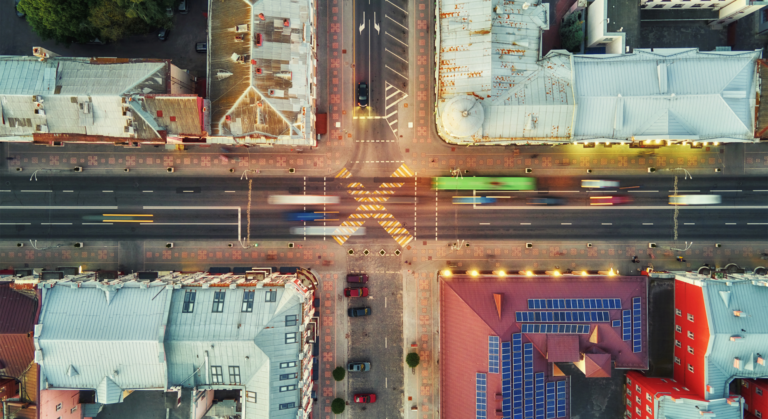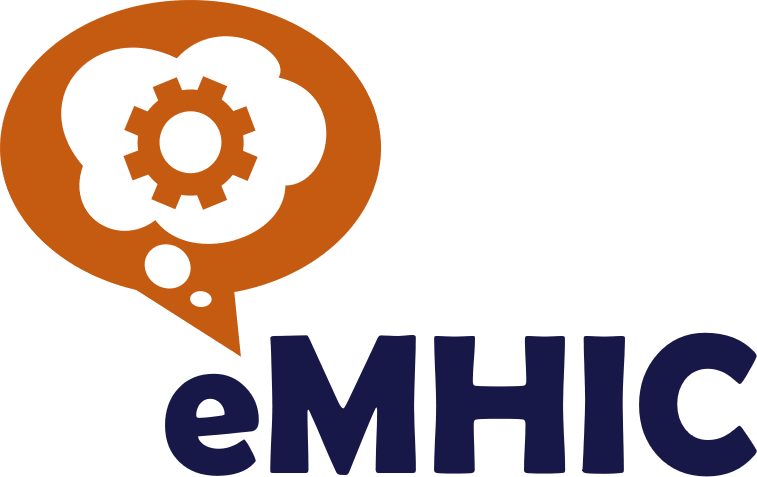There are substantial reasons to think that rapidly developing advances in technology will create profound changes in the decision-making, diagnosis, treatment, and management related to healthcare issues, including mental health care, in the next few years. It is well-known that correctional facilities face significant challenges in addressing the mental health needs of both incarcerated individuals and the staff members who work with them. While they may be frequent topics of consideration at conferences, changes in actual conditions for either inmates or staff in those facilities often take a backseat to budget, hiring, safety and other operational concerns, and the adverse effects of incarceration continue to spread and reciprocate from inmates to staff and back again. High levels of stress, burnout, and mental illness are prevalent among those living and working in these environments, exacerbating already difficult conditions. For example, while studies may vary, research shows that over half of incarcerated individuals may have mental health problems, amounting to over 700,000 inmates. Similarly, over a quarter of correctional officers are thought to experience PTSD, and their rates of divorce, domestic violence, substance abuse and suicide are all higher than in the general population.
The good news is that artificial intelligence (AI) is emerging as a powerful tool with the potential to revolutionize mental health in correctional facilities. AI-driven technologies, such as machine learning algorithms, natural language processing, and wearable devices, are being increasingly integrated into mental health systems to provide more personalized, efficient, and accessible care. These advancements offer unique opportunities to address what has become a mental health crisis in correctional facilities by providing innovative solutions for monitoring, supporting, and improving the mental health, behavioral changes, and personal growth of both staff and incarcerated individuals.
In this article, we explore how AI can be implemented to enhance mental health care in correctional facilities by examining its applications for prison and jail staff, incarcerated individuals, and ultimately the correctional system as a whole. We believe that thoughtful implementation of A.I. based strategies can improve mental health outcomes, reduce violence and recidivism, and create safer and more humane environments.
AI Applications for Mental Health of Prison and Jail Staff
1. Stress and Burnout Management
The litany of job-related adversities for correctional officers is daunting; managing potentially dangerous situations, witnessing violence, and interacting with individuals experiencing severe mental health crises are just a few on that list. Emotional exhaustion, depersonalization, and reduced personal accomplishment from job-related stressor too often leads to burnout, and burnout’s companions, high turnover rates, absenteeism, and compromised job performance.
An AI-powered response to these threats to personal and facility well-being could include strategies to monitor stress levels and identifying burnout risks among correctional staff. For example, wearable devices equipped with AI algorithms can track physiological indicators of stress, such as heart rate variability and cortisol levels, and provide real-time feedback to individuals and administrators for corrective action. This data can be analyzed and used to develop personalized wellness programs that include relaxation techniques, mindfulness exercises, and mental health support tailored to the individual’s needs.
Note, all the technology solutions suggested in this article need to be balanced by protecting privacy and ensuring individuals rights and freedoms are front of mind when considering their implementation (this foundation will be explored in greater detail later in the article). This article is an effort to highlight the potential of AI solutions and these solutions needs to be balanced by the protection of individual freedoms. This is not an endorsement of these tools but rather serve to inspire a different way of thinking about the challenges in the corrections sector.
Additionally, AI-driven wellness programs can offer continuous mental health support through virtual platforms that provide staff with access to counseling, stress management resources, and peer support networks. These programs can help reduce the stigma associated with seeking mental health care and encourage proactive stress management, ultimately improving the well-being of correctional staff.
2. Improved Workload Management
Correctional officers toil in demanding work environments. Administrative tasks, such as report writing, scheduling, and monitoring inmates, can be time-consuming and detract from more critical responsibilities. AI can work to alleviate this burden by automating routine tasks and allowing staff to focus on their primary duties.
Applications here can be quite impressive. For instance, AI-driven predictive analytics can optimize shift scheduling by analyzing patterns in staff availability, workload, and incidents within the facility. This, in turn, can ensure that shifts are distributed fairly, minimizing the risk of overworking individual staff members.
Furthermore, AI tools can assist in workload distribution by identifying areas where additional support is needed, ensuring that staff are not overwhelmed by their responsibilities.
By reducing administrative burdens and optimizing workload management, AI can contribute to a healthier work environment for correctional officers, leading to improved job satisfaction and reduced burnout rates.
3. Recruitment and Retention
Recruiting and retaining qualified correctional staff has become a crucial issue nationwide, with some prison closing or doubling up. Ironically, inadequate staffing may lead to high turnover rates that exacerbate the staffing problems and can compromise the effectiveness of correctional operations. Enhancing mental health support for staff can be a key factor in attracting and retaining qualified personnel.
For example, AI-based training programs can provide ongoing professional development and resilience-building opportunities for correctional staff. These programs can be tailored to the specific needs of individual staff members, offering personalized mental health support and skill development. In addition, AI-driven simulations can be used to train staff in managing high-stress situations, improving their ability to cope with the demands of their work.
Comprehensive mental health support and professional development opportunities make for better correctional jobs, and better jobs are more likely to attract and retain the kind of talented staff that can improve the overall functioning of the facility and contribute to better outcomes for everyone.
In a rapidly changing world, it worth noting that AI has the additional potential to significantly improve recruitment and retention in the corrections by helping to modernize the workplace and making it more attractive to potential recruits. Potential candidates may reasonably view the corrections work environment as outdated. AI could go a long way toward changing this perception by introducing advanced tools and technologies that streamline operations and improve working conditions. For example, AI-driven automation can reduce the administrative burden on staff by handling routine tasks such as scheduling, report generation, and data management, allowing correctional officers to focus on more meaningful and engaging aspects of their roles. Modernization of the workplace can’t help but make the corrections field more appealing to a new generation of tech-savvy recruits who are looking for meaningful jobs that leverage cutting-edge technology.
Beyond modernizing the workplace, AI can enhance the recruitment process itself, making it more efficient and effective. AI-powered recruitment platforms can analyze vast amounts of data to identify candidates who are the best fit for specific roles within the corrections system. These platforms can assess factors such as skills, experience, and even personality traits, helping to match candidates with positions in which they are most likely to succeed and be satisfied. AI can also be used to streamline the interview process through automated scheduling, virtual interviews, and even AI-driven assessments that evaluate candidates’ responses in real time. By improving the efficiency and accuracy of the recruitment process, AI can help jurisdictions identify, attract and hire the right talent more quickly, reducing the time and cost associated with hiring.
Furthermore, AI can play a crucial role in retention by providing ongoing support and development opportunities for staff. AI-driven learning platforms can offer personalized training and development programs that help employees build their skills and advance their careers within the corrections system. These platforms can also monitor employee performance and provide real-time feedback, helping staff to continuously improve and feel supported in their roles. Additionally, AI can help identify early signs of disengagement or burnout, allowing for proactive interventions to retain valuable employees. By creating a work environment that is both technologically advanced and supportive of professional growth, AI can contribute to higher levels of job satisfaction and long-term retention in the corrections space.
AI Applications for Mental Health of Incarcerated Individuals
1. Mental Health Monitoring and Support
Mental health issues are prevalent among incarcerated individuals, with many experiencing conditions such as depression, anxiety, post-traumatic stress disorder (PTSD), and substance use disorders. Traditional mental health care in corrections often struggles to meet the needs of this population due to limited resources, overcrowding, and a lack of trained professionals.
AI systems can enhance mental health monitoring and support for incarcerated individuals by providing continuous, real-time assessments of their mental health status. For example, AI-powered wearable devices can track physiological indicators of stress, mood, and sleep patterns, alerting mental health professionals to potential issues before they escalate. Additionally, AI-driven platforms can offer virtual mental health assessments and therapy sessions, providing incarcerated individuals with access to care even in facilities with limited mental health resources.
These technologies can be particularly beneficial in identifying individuals at risk of self-harm or suicide, allowing for timely interventions. By improving access to mental health care and providing continuous monitoring, AI can help address the mental health needs of incarcerated individuals more effectively.
2. Personalized Rehabilitation Programs
Rehabilitation is a key component of correctional systems, aiming to help individuals develop the skills and behaviors needed to reintegrate into society successfully. However, traditional rehabilitation programs often take a one-size-fits-all approach, which may not address the unique needs of each individual.
AI has the potential to revolutionize rehabilitation by enabling the development of personalized programs tailored to the specific needs of each incarcerated individual. For example, AI algorithms can analyze an individual’s mental health history, behavior patterns, and risk factors to create customized interventions that address their unique challenges. These interventions can include cognitive-behavioral therapy, substance use treatment, and vocational training, all designed to support the individual’s mental health and rehabilitation goals.
By integrating mental health support into broader rehabilitation efforts, AI can help incarcerated individuals develop the skills and resilience needed to succeed upon release, reducing the likelihood of recidivism and improving overall outcomes.
3. Reduction of Violence and Recidivism
Violence is a significant concern in institutions, with conflicts between incarcerated individuals and staff posing serious safety risks. Mental health issues can contribute to violent behavior, making it useful to address these underlying factors to reduce violence and improve safety.
AI tools can be used to identify potential conflicts before they escalate, allowing for early interventions that can prevent violence. For example, AI-driven predictive analytics can analyze data on inmate behavior, interactions, and environmental factors to identify patterns that may indicate a heightened risk of conflict. This information can be used to inform staffing decisions, modify inmate placements, and implement targeted mental health interventions.
Benefits for Correctional Facilities
1. Enhanced Staff Well-being and Performance
Improving the mental health of correctional staff can have far-reaching benefits for both the staff and the facility as a whole. When staff are mentally healthy, they are more likely to be engaged, motivated, and effective in their roles. This can lead to higher job satisfaction, better performance, and a more positive work environment. With a more engaged and healthy work force we can reasonably expect improved correctional outputs leading to increased societal benefits.
AI-driven mental health support can help create a culture of well-being, where staff are encouraged to prioritize their mental health and seek support when needed. This can reduce absenteeism and turnover rates, which are often driven by stress and burnout, and contribute to a more stable and effective workforce. Technology can help to enable jurisdictions to better meet, their often-articulated commitment to improved mental health of their staff.
2. Operational Efficiency and Safety
Operational efficiency and safety are critical concerns, where the well-being of staff and incarcerated individuals is paramount. AI-driven mental health support can contribute to a safer and more stable environment by addressing the mental health needs of both staff and inmates.
For example, by reducing the incidence of violence through early intervention and personalized mental health care, AI can help create a more secure environment where staff and inmates can focus on rehabilitation and positive outcomes. Additionally, by improving staff well-being and reducing turnover rates, AI can contribute to more efficient facility operations, as experienced staff are better equipped to manage the complex demands of their roles. With a more secure and safe environment there are cost savings/avoidance opportunities that will benefit jurisdictions and their respective treasuries. As an example, a safer institution will result in less violent incidents which in turn reduce health care costs to treat the injured incarcerated person and less overtime cots for staff who need to work additional time to cover for those officers injured on duty. Note, this would also apply in situations where officers need to work overtime to ensure coverage when staff are on mental health leave. Further, it is possible that litigation against jurisdictions maybe reduce resulting in fewer judgements and associated legal costs. In totality, these savings could enhance the business case for investment into AI technologies to facilitate improved mental health approaches.
Societal Benefits of Improved Mental Health for Incarcerated Individuals
1. Better Re-entry Outcomes
The transition from incarceration to community life is often challenging, particularly for individuals with untreated mental health issues. Poor mental health can hinder successful reintegration, leading to difficulties in finding employment, securing housing, and maintaining positive relationships. These challenges increase the risk of re-incarceration, perpetuating the cycle of criminal behavior.
Improved mental health support during incarceration, facilitated by AI-driven interventions, can enhance re-entry outcomes by equipping individuals with the tools they need to manage their mental health and navigate the challenges of reintegration. For example, AI-powered apps can provide continuous mental health support and resources post-release, helping individuals maintain their progress and reduce the likelihood of recidivism.
2. Positive Community Impact
The societal impact of improved mental health for incarcerated individuals extends beyond the individual to the broader community. Healthier individuals are more likely to contribute positively to their communities, whether through employment, volunteer work, or maintaining healthy relationships. This can lead to stronger, more resilient communities.
Ethical Considerations and Challenges
Ensuring Ethical Use of AI in Mental Health Care
The application of AI in mental health care, particularly within correctional facilities, presents numerous ethical challenges that must be carefully navigated. One of the primary concerns is ensuring that AI technologies are used in a manner that respects the dignity and rights of both staff and incarcerated individuals. AI systems must be designed and implemented with a clear understanding of the ethical implications of their use, including the potential for bias, discrimination, and stigmatization.
For instance, AI algorithms can unintentionally perpetuate existing biases present in the data they are trained on. If the training data contains biases—such as those based on race, gender, or socioeconomic status—these biases can be reflected in the AI’s outputs, leading to unfair treatment of certain groups. In a correctional setting, where many individuals are already marginalized, the risk of exacerbating inequalities through AI is significant. Therefore, it is crucial that AI systems are rigorously tested and validated to ensure that they operate equitably and do not reinforce harmful stereotypes or practices.
Moreover, the deployment of AI in mental health care should be guided by established ethical frameworks that prioritize the well-being of individuals. This includes adherence to principles such as autonomy, beneficence, non-maleficence, and justice. AI should be used to enhance, rather than replace, human judgment and should always be deployed with appropriate oversight and accountability mechanisms in place. The involvement of mental health professionals in the development and implementation of AI tools is essential to ensure that these technologies are aligned with clinical best practices and ethical standards.
Addressing Privacy Concerns and Data Security
Another critical challenge in the use of AI for mental health is safeguarding the privacy and security of sensitive data. AI systems often rely on large datasets, which can include highly personal and confidential information about an individual’s mental health status, treatment history, and behavioral patterns. In the context of corrections, where privacy concerns are already heightened, the use of AI must be accompanied by robust data protection measures.
Privacy concerns are particularly acute when considering the continuous monitoring capabilities of AI. Wearable devices and other AI-driven tools that track an individual’s mental health in real-time can generate vast amounts of data. While this data can be invaluable for providing timely and personalized mental health support, it also poses significant risks if not properly managed. Unauthorized access, data breaches, or misuse of this information could have severe consequences for individuals, including stigmatization, discrimination, or even legal repercussions.
To address these concerns, it is essential to implement stringent data governance frameworks that ensure data is collected, stored, and used in compliance with relevant privacy laws and regulations. This includes obtaining informed consent from individuals before their data is collected, anonymizing data wherever possible, and ensuring that access to data is restricted to authorized personnel only. Additionally, corrections must invest in advanced cybersecurity measures to protect against potential threats and breaches.
Therapeutic Alliance
Digital and AI counseling programs offer accessibility and consistent support, but they present significant challenges that must be addressed. One primary concern is the lack of genuine emotional connection, which is essential for effective therapy. While AI programs can simulate human understanding and empathy, they are not human. They cannot provide the deep, shared human experience that should form the core of therapeutic relationships. Their inability to fully grasp the nuanced and contextual nature of human experiences will necessarily create false and inauthentic therapeutic alliances despite the verisimilitude and may lead to potential misinterpretation of client needs, and inappropriate or even harmful advice. The potential for adverse consequences or damage is further amplified when A.I. applications are used in cases of more severe mental health disorders. Moreover, AI programs lack ethical agency, raising concerns about accountability and the inappropriate provision of mental health support without consideration for its profound human implications. Fears that ethical concerns could arise around data misuse and manipulation, and the potential for AI to be used maliciously or for inappropriate commercial reasons also need to be addressed.
While AI holds promise for use in mental health, it should be developed with guidance from mental health experts and with strong ethical guidelines as a complement to human-led therapy rather than a replacement. Balancing the benefits and limitations of digital counseling is key to ensuring it serves the best interests of those seeking mental health support.
Balancing AI Benefits with Potential Risks and Ethical Dilemmas
While the potential benefits of AI in enhancing mental health care in corrections are significant, it is equally important to acknowledge and address the potential risks and ethical dilemmas associated with its use. One of the key dilemmas is the potential for AI to be used in ways that prioritize efficiency or cost-saving over the quality of care and individual well-being. For example, there is a risk that AI could be used to reduce the need for human intervention in mental health care, leading to a depersonalization of services and a reduction in the quality of care provided.
Furthermore, the use of AI in correctional settings raises important questions about the balance between security and rehabilitation. While AI can enhance security by identifying potential risks and preventing incidents, it is essential that these measures do not come at the expense of individuals’ rights or undermine the rehabilitative goals of the correctional system. The use of AI must be carefully calibrated to ensure that it supports, rather than hinders, the rehabilitation and reintegration of incarcerated individuals.
To navigate these challenges, it is crucial that the implementation of AI is guided by a clear ethical framework that balances the benefits of AI with its potential risks. This includes engaging with a broad range of stakeholders, including mental health professionals, ethicists, human rights advocates, and, importantly, individuals with lived experience in the correctional system. By adopting a collaborative and transparent approach, we can ensure that AI is used in a manner that is both ethical and effective.
Future Prospects and Conclusion
Potential Future Developments in AI for Mental Health in Correctional Settings
The future of AI in mental health care holds significant promise, to enhance the effectiveness and accessibility of mental health services. One of the most exciting prospects is the continued advancement of AI-driven predictive analytics that can enable jurisdictions to anticipate and address mental health issues before they escalate. By analyzing patterns in behavior, communication, and physiological data, AI could help identify individuals at risk of mental health crises and intervene early, providing targeted support when it is most needed. Correctional leaders will be able to drive improvements in mental health by advancing these developments and then tailoring them to the correctional context. Corrections does not need to be on the leading edge of development, but leaders should be alert to the possibility of importing proven solutions as they develop.
Another area of potential growth is the integration of AI with other emerging technologies, such as virtual reality (VR) and augmented reality (AR). These technologies could be used to create immersive therapeutic environments that support mental health and rehabilitation. For example, VR can be used to simulate real-world scenarios, helping individuals develop coping strategies and social skills in a controlled and supportive environment. These technologies are already developed and awaiting modification for correctional populations.
Moreover, AI could play a crucial role in facilitating personalized mental health care by continuously learning from the data it collects and refining its recommendations over time. This could lead to the development of highly individualized treatment plans that are tailored to each person’s unique needs and circumstances, improving the likelihood of successful outcomes.
Final Thoughts on the Importance of Integrating AI to Enhance Mental Health Care in Correctional Facilities.
In conclusion, the integration of AI into mental health care in correctional facilities represents a significant opportunity to improve the well-being of both staff and incarcerated individuals. By leveraging the power of AI, we can enhance the quality, accessibility, and effectiveness of mental health services, leading to better outcomes for all involved. At the same time, new technology always presents new risks, and it is essential that this integration be approached with the appropriate caution to ensure that ethical considerations are realistically evaluated and that the potential risks and challenges are carefully managed.
Rapid and significant changes in technology are omnipresent, and it will be important to continue exploring and refining the ways in which AI can be used to support mental health in correctional settings. By doing so, we can create a correctional system that is not only more efficient and effective but also more compassionate and rehabilitative, ultimately benefiting individuals, communities, and society as a whole.





